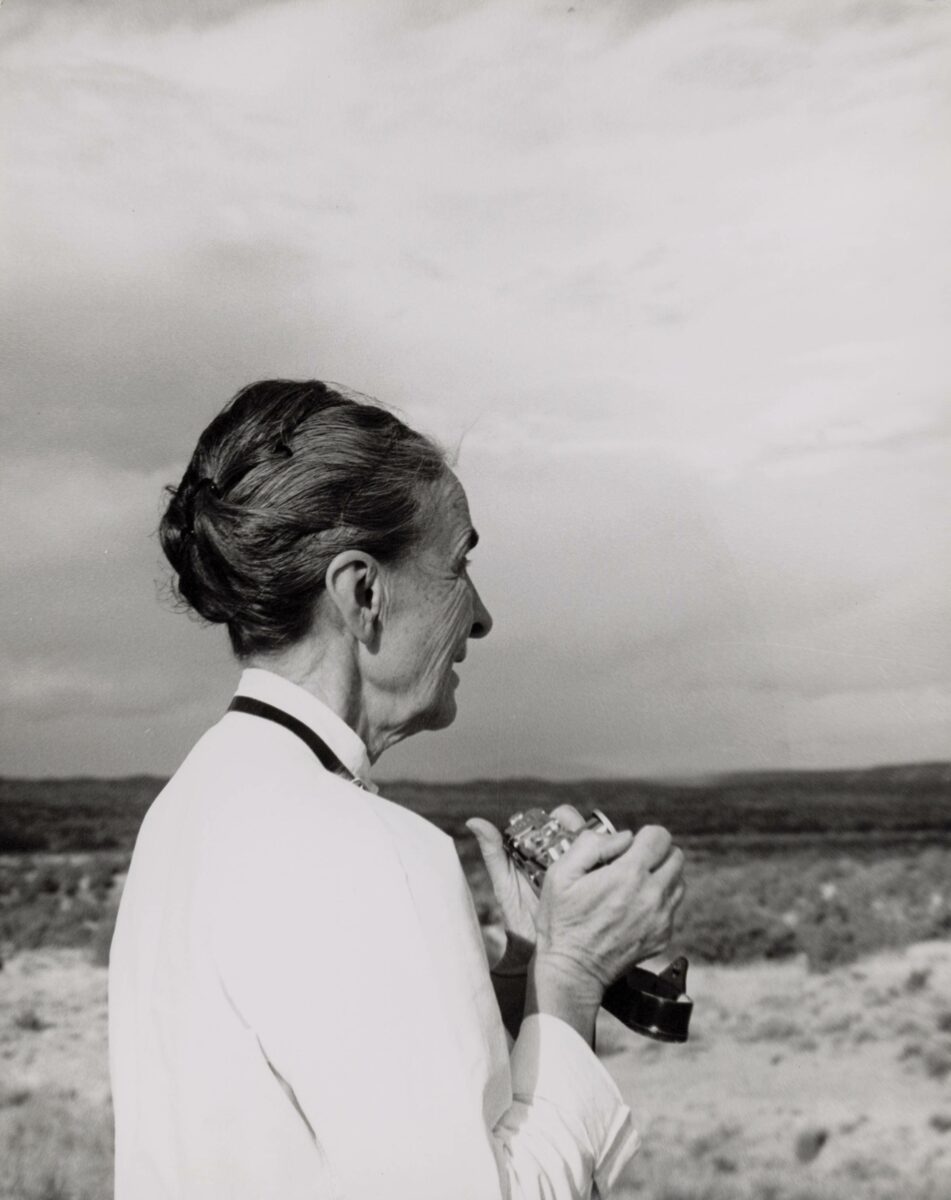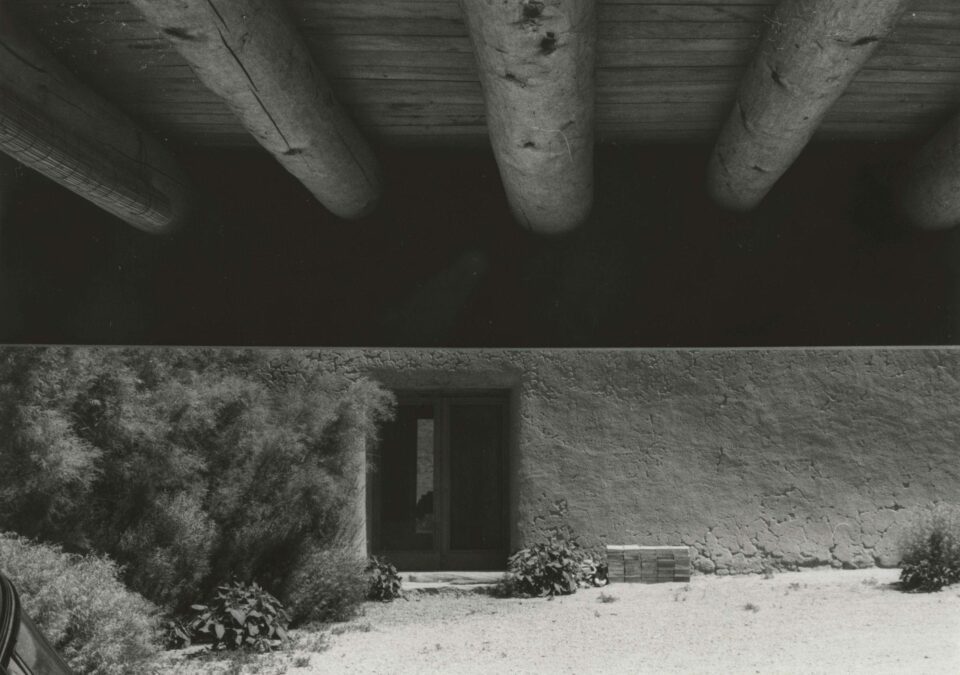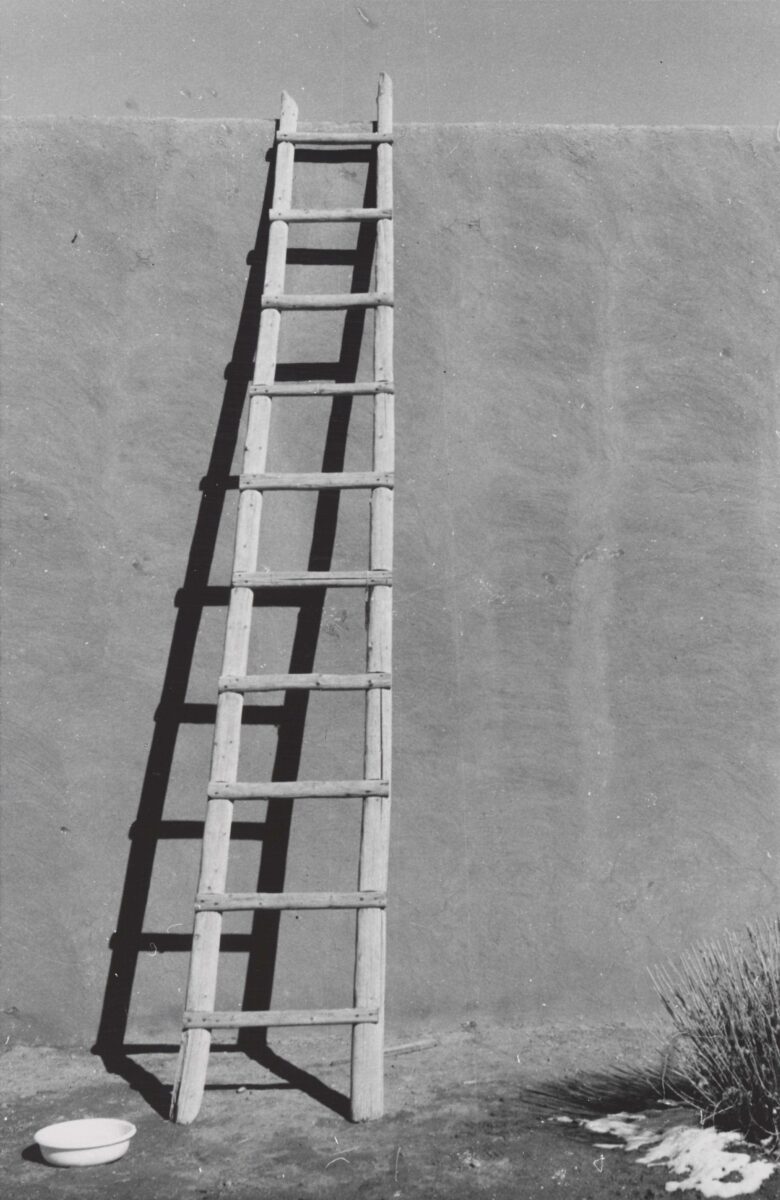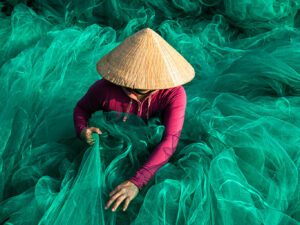Sunset-coloured mountains, delicate petals and close-up blooms are just some of the images that come to mind when you think of Modernist pioneer Georgia O’Keeffe (1887-1986). She created over 2,000 paintings across the course of her career, including Oriental Poppies (1928), Cow’s Skull: Red, White, Blue (1931) and Above the Clouds (1962-1963). Yet, elements of her painterly style can also be found in photography, including close cropping, flat shadow and bold lines. It is unsurprising, then, to find that O’Keeffe later revisited her subject matter through the lens of a camera, including flowers, doorways and mountains.


Georgia O’Keeffe, Photographer at Denver Art Museum examines her practice beyond the canvas, showcasing nearly 100 rarely seen photographs taken over 30 years. The collection outlines an enduring determination to capture the innate beauty of the world. Black and white shots are mirrored by depictions in oil, pastel and watercolour. One example is Jimsonweed (Datura stramonim), (1964-1968), which almost exactly replicates her earlier painting Jimson Weed/White Flower No. 1 (1932). In the shadow-filled image, a magnified white flower is framed by a crown of dark leaves. Papery, curling petals, beginning to shrivel from the heat, are marked with pencil-like lines – a detail that is blurred and exaggerated to wistful effect in the parallel painting.
O’Keeffe was driven to depict awe-inspiring environments by any means, emphasised by her written sentiments. In 1945, after buying an adobe house in Abiquiú, she wrote: “Two walls of my room are glass and from one window I see the road toward Española, Santa Fe, and the world. The road fascinates me with its ups and downs and finally its wide sweep as it speeds toward the wall of my hilltop to go past me. I had made two or three snaps of it with a camera… It was accidental that I made the road seem to stand up in the air, but it amused me, and I began drawing and painting it as a new shape.”

The artist was deeply inspired by New Mexico’s arid, rocky landscape. For two decades, she made regular trips to the state before permanently moving in 1949. Later photos of ladders, doorways and dry-stone walls capture attempts to quickly record her surroundings for paintings. Ladder Against Studio Wall With Black Chow (Bo-Bo) (1959-1960) features a long, tilting step ladder that leans against a flat, grey-wash wall. A solid black shadow stretches out behind the object, creating a boxy pattern on the building. Elsewhere, empty doorways are shot straight on – captured for their structural properties.
What sets these snapshots apart is O’Keeffe’s approach towards photography. In 1946, after the death of her husband, photographer Alfred Stieglitz (1864-1946), she picked up a camera for the first time. The medium was a functional tool, used to enhance her already successful career. She gleaned information from fellow artists who visited her in New Mexico, including Todd Webb (1905-2000), Ansel Adams (1902-1984) and John Loengard (1934-2020) – noting apertures and shutter speeds. In 1956 whilst with O’Keeffe, Webb penned: “I’m giving her a few lessons with the Leica and she will probably get one… She sees well, of course, and seems to have a sense of the photographic eye. Some of her paintings use the photographic perspective.”


Webb’s Georgia O’Keeffe with Camera (1958), captures O’Keeffe’s desire “to refine and clarify her vision as a painter” from behind the lens, as stated by Curator of Photography, Eric Paddock. The artist is depicted side-on, clutching a camera in both hands. Her face is full of awe and wonder as she looks out to a desolate vista. This portrait, along with her own images in the exhibition, highlights O’Keeffe’s unwavering joy when reframing, rendering and preserving the sublimity of the world. Her practice is therefore not defined by a single medium, but instead her boundary-breaking artistic vision.
Georgia O’Keefe, Photographer is at Denver Art Museum | Until 6 November
Words: Saffron Ward
Image Credits:
1. Georgia O’Keeffe, Chrysler Building from the Window of the Waldorf Astoria, New York, c. 1960, gelatin silver print, Georgia O’Keeffe Museum, Santa Fe. © Georgia O’Keeffe Museum.
2. Georgia O’Keeffe, Sugar Cane Fields and Clouds, March 1939, gelatin silver print, Georgia O’Keeffe Museum, Santa Fe. © Georgia O’Keeffe Museum.
3. Georgia O’Keeffe, Waiʻanapanapa Black Sand Beach, March 1939, gelatin silver print, Georgia O’Keeffe Museum, Santa Fe. © Georgia O’Keeffe Museum.
4. Georgia O’Keeffe, Garage Vigas and Studio Door, July 1956, gelatin silver print, Metropolitan Museum of Art, New York. Anonymous Gift, 1977. © 2022 Georgia O’Keeffe Museum / Artists Rights Society (ARS), New York.
5. Georgia O’Keeffe, Ladder Against Studio Wall with Black Chow (Bo-Bo), 1959–60, gelatin silver print, Georgia O’Keeffe Museum, Santa Fe. © Georgia O’Keeffe Museum.
6. Georgia O’Keeffe, North Patio Corridor, 1956–57, gelatin silver print, Georgia O’Keeffe Museum, Santa Fe. © Georgia O’Keeffe Museum.





